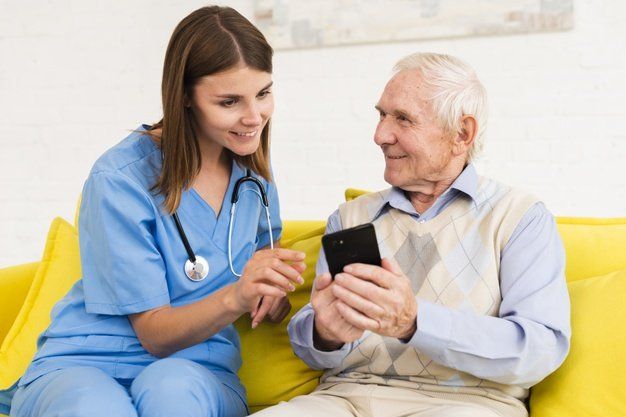BLOG

Many older adults experience feelings of loneliness and isolation as they age, but pets can provide the companionship and love seniors desire. A new survey conducted by Home Instead, Inc., franchisor of the Home Instead Senior Care Network, found regular interaction with animals can help to reduce feelings of isolation and loneliness in older adults.The most frequently cited benefits of pet ownership are company, comfort, unconditional love, entertainment and improved mood. In fact, 86 percent of pet owners agree they would be lonelier and less happy without their pet, and 58 percent agree that they would not be as physically healthy without their pet.The companionship and love provided by a pet can be especially meaningful for those most at risk for isolation. Home Instead found that pet owners who live alone are significantly more likely to report increased benefits of pet ownership.Owning a pet can also be an important factor for seniors deciding where they will live as they age. According to the survey, 82 percent of older adults say they will not consider moving to a senior living community without their pet.While interaction with animals has been shown to improve mental and physical well-being in older adults, research from Home Instead confirms that seniors don’t need to own pets to experience the benefits. Those who regularly interact with, but don’t own, pets report feeling better just spending time with animals owned by family, friends and neighbors.There are many ways seniors can interact with animals without taking on the responsibility of pet ownership. Here are a few ideas:* Volunteer at a rescue organization or animal shelter. Many rescue organizations and animal shelters could use an extra hand. Seniors can help provide care for animals, including feeding, watering, restocking supplies, washing dishes, walking dogs, cleaning cages and enclosures or socializing with the animals. Volunteers experience the benefits of interacting with pets, and they can provide some care to an animal in need.* Get to know your neighbors’ pets. Seniors who regularly walk their neighborhoods will likely see pet owners walking their dogs. Asking to join them for a walk might lead to new friendships with neighbors and dogs.* Connect with a therapy animal. Pet Partners therapy teams, made up of a pet owner and his or her registered animal, go into many locations where seniors are living or being treated, such as hospitals, hospice centers and care communities.* Visit a pet store. Some pet stores sell small animals, such as guinea pigs, hamsters, chinchillas, gerbils, mice, rats, certain geckos, bearded dragons, snakes, and specific types of frogs, birds and fish. Visiting can provide a pet fix!With so many options available, finding the right animal interaction for each individual should be as easy as a walk in the dog park.To help older adults determine what type of pet interaction is right for them, the Home Instead Senior Care® network is offering free information and tips to help seniors incorporate animals into their lives. To learn more about how older adults can bring animals into their lives, visit PetsandSeniors.com or contact your local Home Instead Senior Care office or www.homeinstead.com.
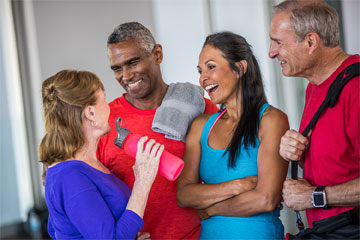
You’re never too old to develop or refine an exercise program. And there has never been more opportunity to find an array of programs that suit your interests, your fitness ability and your lifestyle.As an older adult, the reasons for exercise change: benefits include helping to control chronic conditions such as hypertension and diabetes, strengthening muscles to prevent falls, and improving flexibility to maintain activities of daily living.An added benefit? Regular exercise can help boost your mood and improve your overall sense of well-being. And, you’ll make new friends! (Of course, always talk to your doctor before starting any type of exercise program.)Where to look for a new exercise program? Start with your local fitness or community center. The key is finding activities that you enjoy. Some tips to get started:- Follow your interests. Like to dance? Swim? Maybe yoga or Tai-Chi sounds appealing. There are fitness classes for every taste and ability level.- Follow your friends. Going to a fitness class with a friend improves your motivation and if you’re going it alone – here’s your chance to make new friends!- Listen to your body. Exercise doesn’t need to be painful to be beneficial. Start slow and progress over time.- Set goals. How often do you want to exercise? How hard? Develop a three- to six-month plan so you can measure your success.But wait, there’s more: Older adults who participate in group exercise programs report improved quality of life from the social aspect of group fitness. The group creates a sense of community that helps keep you motivated.Social isolation, which often leads to loneliness, is common among seniors, but taking a fitness class can forge a bond that keeps people coming back for exercise and extends to socializing outside of class.In a recent study of adults aged 65 years and older, researchers surveyed 46,564 participants in the SilverSneakers fitness program between 2010 and 2016 to determine how exercise improved their quality of life."Even though regular physical activity is important, well-being is about more than just exercise," according to Julie Logue, Training Manager at Tivity Health. "Through SilverSneakers, you can explore all kinds of fitness programs, socialization and nutrition programs to help you live your best life. We empower members to live healthier, happier, longer."Older adults with more frequent visits to fitness centers who participate in SilverSneakers exercise programs report significantly fewer days when they felt physically or mentally unwell and rated their physical and mental health higher than those who participated less frequently.Curious about more ways to stay motivated to get and stay fit? During open enrollment for health insurance between Oct. 15 and Dec. 7, enroll in a plan that offers SilverSneakers, which provides members with access to more than 16,000 fitness and community locations nationwide.To check your eligibility and find a health plan that includes SilverSneakers, call 888-423-4632 or visit silversneakers.com .
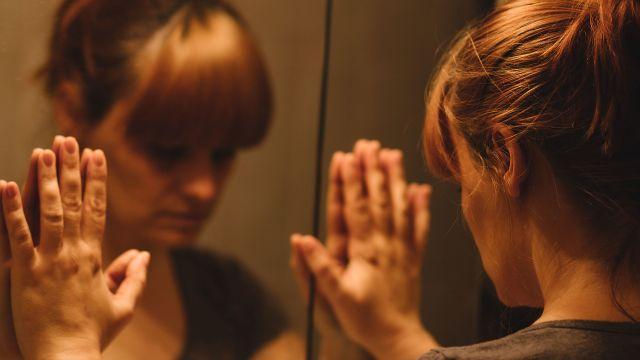
Every minute, 29 people in the US are victims of sexual violence, physical violence or stalking. By Olivia DeLong MEDICALLY REVIEWED IN JANUARY 2022 According to the Centers for Disease Control and Prevention (CDC), over half of the women who are murdered in the US die at the hands of an intimate partner. And partner violence and abuse can happen to both men and women: the National Domestic Violence Hotline reports that 30 percent of women and 10 percent of men in the US have experienced some type of abuse by an intimate partner . All of these statistics confirm that abuse—whether physical, emotional or sexual, is a huge problem in this country and beyond. Director of Behavioral Health Services at Colleton Medical Center in Charleston, South Carolina, Deborah Parker, RN, discusses the hard truth about how abuse begins, how to recognize the signs and what to do about it. How abuse begins Abusive relationships don’t always start out abusive, says Parker. “The abuser can seem quite charming, pleasant and doting at first. Then, over a gradual period of time, controlling behavior starts to shine through.” And while not always the case, research shows that a lot of abusers have been abused before. “If they haven’t had strong role models to show them what a good relationship is like, if they witnessed an abusive relationship between their parents or were abused by someone themselves, there is a higher likelihood that they may develop into abusers,” says Parker. Abuse and violence is a learned behavior, and is usually observed from family, friends or other members of their community and culture. According to the National Domestic Violence Hotline, domestic abuse almost always stems from a yearning to have power and control over an intimate partner. Most abusers think that their feelings and wishes should come before anyone else’s. And while drug and alcohol use can definitely make abuse worse, it does not cause someone to be abusive. Some abusers may also have an undiagnosed personality or psychological disorder. Types of abuse While every domestic violence case looks a little different, here are signs of some of the most common types of abuse. Physical abuse: Direct contact like punching, pulling hair, slapping, kicking, biting and choking are just some of the ways abusers unleash their aggression on a loved one. Abusers can hurt you in other ways, too, like controlling how much your sleep or eat, or denying you medical care when you need it. They may take their aggression out on animals or children, too. Controlling behavior: Abusers want full control over their significant other. Some of the ways they try to gain control can include: Managing the money and refusing to let you be involved or have access to it. Asking a lot of questions such as "Where have you been?” “Why are you late?” Stopping in to check on you at work, the grocery store or other places where you might be expected. Restricting what you wear or trying to control how you look: your hair, your weight or your makeup. Jealous tendencies: With control comes jealousy. Your abuser may question when other men or women look at or talk to you and how much time you spend away from your abuser. Unrealistic expectations: Because an abuser’s wants and needs always come first in their minds, they’re likely to expect a lot from their significant other. “Having unrealistic expectations is common, and they usually expect that you can anticipate all of their needs. They expect perfection and service,” says Parker. And if something goes wrong, Parker says, they will usually blame you for the mistake. “They may make it seem like it was your fault for something as simple as missing a doctor’s appointment.” Mood swings and aggressive behavior: In further attempts to control you, it’s not unusual for an abuser to say cruel things, threaten to leave you, criticize everything you do or believe in and spout off degrading comments. “This hostile behavior is pretty universal for all kinds of abuse, whether it be physical abuse, verbal abuse, emotional abuse or sexual abuse,” Parker says. Forced isolation: It’s very common for abusers to take control of who you can and can’t see—to cut you off from friends and family and forbid you from being social. Forceful sex: Abusers are also aggressive in the bedroom. They force you to have sex when you d on’t want to , and force you to partake in sexual activities that you don’t want to do. “Oftentimes this starts as playful physical activity during sex—tactics like hair pulling or slapping,” says Parker. Things will then become more forceful; you may be pinned down, or your abuser won’t take no for an answer. Phrases like “If you really loved me, you would sleep with me,” and “sleep with me to prove your sexuality” are two phrases often used as coercion tactics. Remember that just because you’ve said yes to something earlier on in your relationship, it doesn’t mean you have to later. If you don’t consent to sex, it is rape. What to do if you think you’re in an abusive relationship The first thing to know is that abuse is not OK and it’s not your fault. “It is someone else's maladaptive relationship skills and you just happen to be the victim of that,” says Parker. After experiencing emotional and physical abuse, it’s easy to start believing the awful things you’re hearing, which can make it hard to leave or get help. “If you are consistently hearing that you're no good and you’re not worthy, over a period of time you can become emotionally beaten down to the point that you start to internalize and potentially believe those things, even though they're not true,” says Parker. And often times abusers have something called a honeymoon period that may also make it hard for you to leave. The honeymoon period usually involves an act of violence or abuse followed by sweet comments, begging for forgiveness and claims that it will never happen again. “This cycle usual goes around and around,” Parker says. There are some ways you can take action and find safety for yourself and any children in your care: If you are in immediate danger, do everything you can to call 911 right away. If you’ve been the victim of abuse, reach out to the National Domestic Violence Hotline website or call 800-799-7233. Trained staff members can answer your questions and give you information about resources to help you. Keep records of the abusive events, the dates and the times that they occurred. If you seek a restraining order or some type of legal protection, you’ll have a record of what happened and when. If you are going to leave, learn more about making a plan at the Rape, Abuse and Incest National Network’s website or call 1-800-656-HOPE. They can help you figure out where you’ll go, how you’ll get there and who you’ll ask for help, or at least make aware of your plans to leave. If you don’t have family or friends nearby, crisis shelters that will protect your identity are available for you and your children. Find one here .
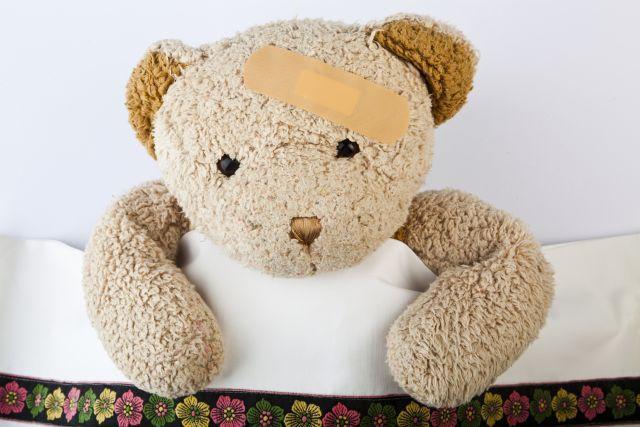
By Darria Gillespie, MD MEDICALLY REVIEWED IN JANUARY 2021 The emergency room is not a place you go to learn about parenting. Yet, after years of working as an ER doctor, during moments ranging from tragic to the happily poignant, I’ve picked up a few lessons. Now, as a new parent, I’m trying to implement them in my own life and wanted to share them with you. Read on. And leave the Cheetos at home (see #4)! 1. Monkey see, monkey do. Your child will mirror your actions, not your words. When children need stitches, they look to their parents. If you’re calm (ok, you can be entirely freaking out on the inside, but it’s what your child sees that counts), your child has a much greater likelihood of being less terrified. Brave parent = brave munchkin! 2. The best laid plans . . . (you know the rest). Remember that lovely little arts and crafts area you set up at home? Your 4-year-old felt it was the perfect location for placing beads up his nose. So, your afternoon of domesticity is spent with . . . me. In the ER. Positive? We got the beads out. Negative? You’ll never be able to look at beads again without nausea. Second takeaway? (This one’s a freebie.) Watch your kids whenever they’re playing with anything smaller than their nostril. 3. Life moves quickly. Babies and toddlers move even more quickly. Your vigilance has to be nonstop. Anyone who has a child knows that they move the fastest when they seem to be getting into trouble, whether it’s entertaining themselves by chewing on an electrical cord or tasting your hairspray. You. Just. Turned. Around. For. One. Freaking. Second! My infant can’t even crawl—she moves in a combination of spinning and rolling over—yet she gets around quickly when in the direction of danger. How anyone who essentially moves in a series of “five-point turns” gets anywhere that fast is beyond me. But so it goes. 4. Cheetos equals good prognosis—and a potentially longer ER stay. One ER where I worked had a vending machine with Cheetos. I knew two things when I walked into the room and saw a happy child with an orange mouth: 1. Their condition wasn’t life-threatening (eating Cheetos is apparently just not something you do when your life is on the line) and 2. They were going to have a long ER stay while we waited for the Cheetos to digest before we could sedate them to stitch their cut, fix their fracture, etc. Lesson? If you’re taking your child to the ER for any reason, don’t let them eat Cheetos or anything else while you’re on your way or waiting in the ER! 5. It’s all (or at least some) in your head. Who are some of the toughest people on the planet? Kids. I’ve seen many a child leave with a cast and a popsicle while an adult with the same injury requires a prescription for Percocet and a note of absence for work. Seeing this really speaks to the power of mindset—how we view setbacks and how we respond to them. 6. If it crosses your mind that something in your home might be dangerous, fix it. I have seen too many parents who said “I just knew that was a hazard.” You’ll probably never know what injury you averted, and that’s ok. 7. No one. No one. Is more crazy protective than a mom. Don’t. Cross. Mama. Bear. I appreciate that you would rather have me cut off your own arm than place an IV in your child or perform some other painful treatment, no matter how mild. I really do. You can be an excellent advocate for your child by remaining calm and asking questions. (See item #1.) 8. Delete “that will never happen to me” from your mindset. When we hear of something tragic, we tend to think that it can happen to “other” people—leaving a child unobserved by a swimming pool even for a minute, driving while looking at your phone . This thinking makes us feel safe. Falsely safe. I’ve taken care of enough patients to know that these things can happen to people just like me, just like you. I don’t say this to frighten you, but to take away a false sense of security and leave in its place an awareness that will keep you and your family safe. Life is short. This doesn’t require explanation. But I’m reminded of this in ways that don’t necessarily include the tragic. When I see a parent step up after a child’s health scare, or even a little munchkin bounce back after an injury, I’m reminded that it’s never too soon to make changes, no matter how scary or hard they may be.

We all do it: we let over-the-counter (OTC) medicines like pain relievers for a headache, allergy medicine or cough and cold products pileup in our bathrooms. Especially over the past few years, you may have let medications linger in the house past their expiration dates. But old and unneeded medication should be disposed of safely, and springtime is the perfect time to get it done.Proper medicine disposal keeps our homes and communities safe and our environment clean, according to the Consumer Healthcare Products Association (CHPA), the national trade association representing manufacturers of OTC medicines."Medication safety is everyone’s responsibility, and proper medication disposal is an important part of medication safety," says Anita Brikman, Executive Director of the CHPA Educational Foundation, which is a 501c3 organization focused on promoting the safe use, storage and disposal of OTC medicines and dietary supplements to consumers. "How you dispose of unwanted, unused, or expired OTC medicines is important and easy," she says.So clean out your medicine cabinet this spring, and choose one of these three quick and easy disposal methods:– In-Home Disposal. Many OTC medications, and some prescription medications, can be thrown out with your regular trash at home. Mix the medicine (do not crush any tablets or capsules) with some especially unappealing trash, such as kitty litter or used coffee grounds, and place the mixture in a sealed plastic bag. Then put the bag in your usual household trash bin, and you’re done.– In-Store Disposal. Many pharmacies provide designated kiosks where you can bring any medication, OTC or prescription, for safe disposal. The website MyOldMeds.com has a zip code locator tool to find more than 22,000 verified sites nationwide that offer free medicine-disposal options all year long.– Take-Back Events. The U.S. Drug Enforcement Administration (DEA) conducts national Drug Take-Back Day events, and the next one will occur this year on April 30.These events, which are set up temporarily at convenient community- based locations throughout the country, serve as an opportunity to return medications safely as a friendly public-service reminder to clean out your medicine cabinet.Visit KnowYourOTCs.org for more details about safely disposing of medications at home, and visit MyOldMeds.com to find secure and safe disposal locations near you.
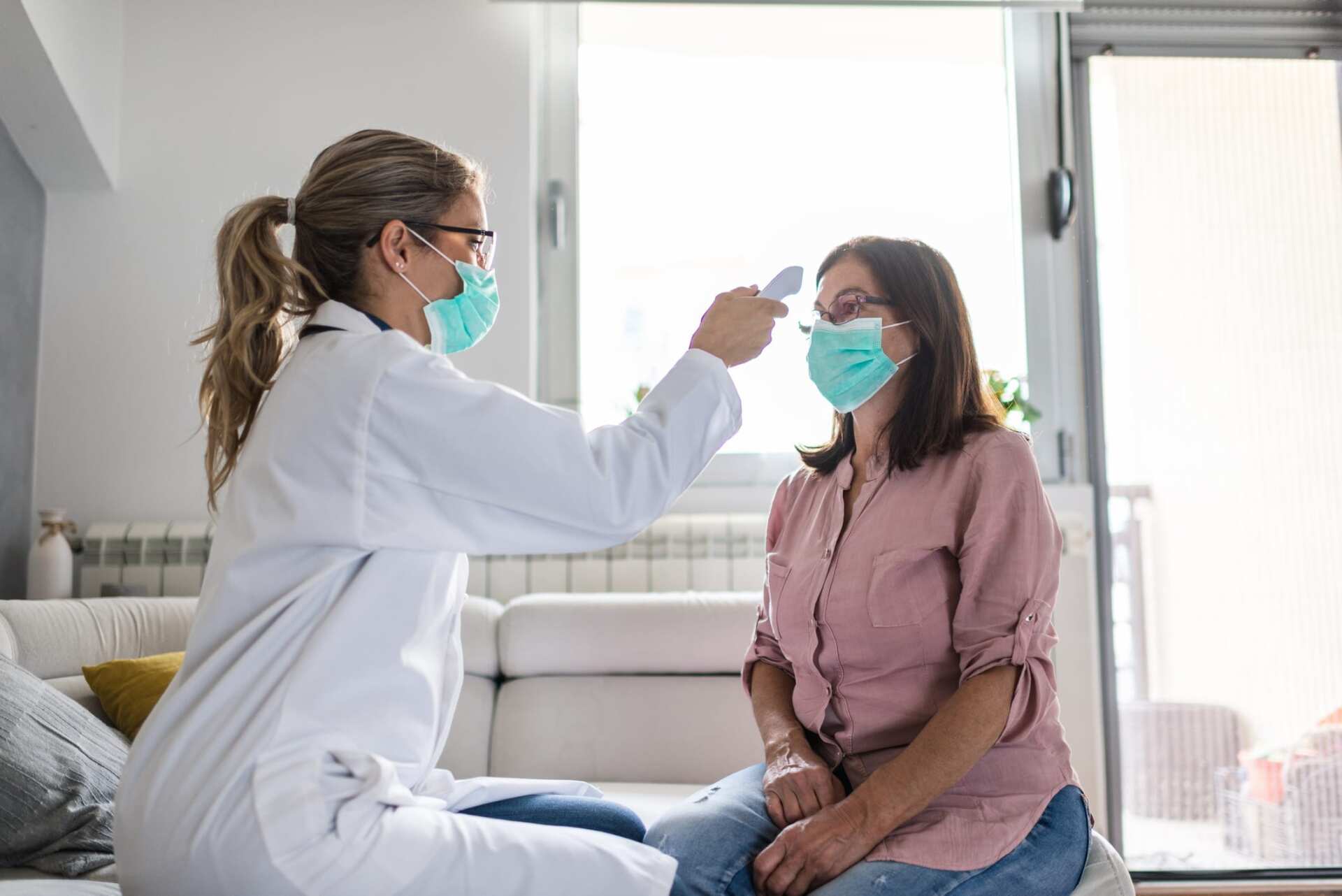
HPIPA Portal The portal is available to all of our providers at any time! It helps users easily enter authorization requests, access quality scores, membership count and payment details. You are also able to use a quick chat function to reach out directly to our Customer Service team without ever picking up a phone. 24/7 Phone Platform We offer an automated voice verification system to provide needed parties with authorization and claims statuses, as well as eligibility verification. This feature can be accessed 24 hours a day, 7 days a week. Open Saturdays We continue to remain open during our extended hours every Saturday from 9 am to 4 pm. These additional hours were added to give better support to our members and provider network. This Saturday, feel free to call us at 213.637.0925 to receive help for any items you need! Constant Communication We are reaching out to all of our offices constantly during this time to ensure that we have the latest information on who is providing Telemedicine services, who is closed, and if there are any other updates.

With the state of California moving into a regional stay at home order, we would like to remind our valued partners to stay safe and healthy. This holiday season, consider changing your holiday plans to practice safe social distancing to prevent the spread of COVID-19 to your friends and loved ones such as zoom holidays. Celebrating via a computer or phone will guarantee a s afe holiday. If you must gather in your home please remember to wear a mask while inside and stay six feet apa rt. The CDC and the State of California offer a few guidelines to help you celebrate safely. In California, please stay at home as much as possible to minimize mixing to reduce unnecessary exposure. For the holidays, we suggest celebrating outside and limiting the number of attendees as much as possible. Try to keep your holiday celebration to just your immediate family if possible. If you absolutely must see other family members please refrain from hugging and wear a mask as much as possible when entering another's home. Try exchanging gifts by dropping them off at the doorstep or on a pouch while social distancing. Remember to single use silverware and have preserved holiday dinner. Hispanic Physicians wishes you the best and we hope that your holiday season is still special. If you need anything please don't hesitate to call us at 213.637.0925 or email your Provider Relations Representative at PR@hpipa.net.
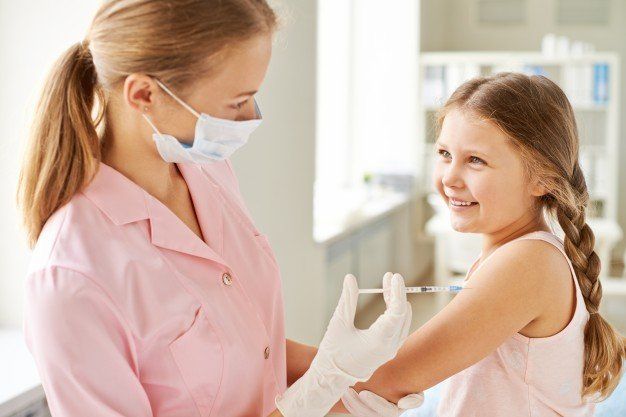
As the Covid-19 pandemic continues to impact our communities, it is important that we remember to look out for our children. Now more than ever it is imperative that we schedule our Well-Child visits and ensure our children remain up to date with their immunizations. Immunizations are a safe and effective way to protect children against vaccine preventable diseases. Without immunizations, we risk diseases like mumps and measles returning that can put our children at deadly risks. During this time, Hispanic Physicians prioritizes our members’ safety and health. We know that amidst the chaos and uncertainties of today, it is easy to forget to complete the preventative services that are offered to our members free of charge. Our providers are taking the necessary precautions to provide the safest environment for your children. Some of the precautions include: Prioritizing appointments for newborn care and children in need of vaccination Scheduling Well-Child visits and Immunizations visits in the morning and reserving the afternoon for sick visits Offering Well- visits via telehealth Using one site for well visits and one for sick visits for clinics that have multiple practice sites Requesting that members remain outside or in their car until the time of their appointment Hispanic Physicians is a strong and committed advocate for the members of our community. We genuinely care about you and the well being of your child, and this starts with preventative services such as well visits and immunizations. Our goal is to promote healthy living and the best quality for all our members.

As we enter the fourth quarter of 2020 and reflect on this past year, it is safe to say that this was one for the books. 2020 presented many obstacles and required providers and medical groups to be creative, innovative and think outside of the box. In July, NCQA announced that 40 measures were updated to comply with new CMS provisions for telehealth. This increased the number of measures that can be completed remotely. The main measures that affect our contracted providers were the well care visits for children and Medicare members. In order to comply with the NCQA standards, the telehealth visit must satisfy all the criteria for each measure and is allowing for self-reported vitals including height, weight and blood pressure readings. NCQA made some additional changes that will affect our providers for 2020. What were previously Well Child Visits 3 to 6 years (W34) and Adolescent well Care visit ages 12 to 21 (AWC), have officially been combined into Child and Adolescent Well care visits ages 3 to 21 (WCV). This measures the percentage of members between the ages of 3 to 21 completed one well care visit. In addition to this change, the Well-Child Visits in the First 15 Months of Life (W15) was changed to Well-Child Visits in the First 30 Months of Life (W30). This measure children who complete 6 or more Well- child visits before the 15th month of life and children who have two or more well child visits between 15 and 30 months of life.






